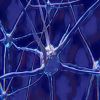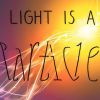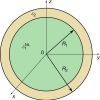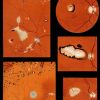-
 +18 +1
+18 +1A neural network that operates at the speed of light
A team of researchers at the University of California has developed a novel kind of neural network—one that uses light instead of electricity to arrive at results. In their paper published in the journal Science, the group describes their ideas, their working device, its performance, and the types of applications they believe could be well served by such a network. By Bob Yirka.
-
 +29 +1
+29 +1Long before iPhones, this 19th-century gadget made everyone a mobile addict
Kaleidoscopes had kids walking into walls.
-
 +9 +1
+9 +1Supernatural Sound
Science and Shamanism in the Arctic. By Tim Fulford. (July ’13)
-
 +21 +1
+21 +1Light: Particle or Wave?
Classically, light can be thought of in two ways: either as a particle or a wave. But what is it really? Well, the ‘observer effect’ makes that question kind of difficult to answer. So before we get too far into it, what is the observer effect?
-
 +9 +1
+9 +1Device can theoretically trap a light ‘bit’ for an infinite amount of time
Researchers have designed a nanoscale device that, under ideal conditions, can confine a “bit” of light (that is, light with a single precise energy value) for an infinite amount of time.
-
 +18 +1
+18 +1The Corruption of the Eye: On Photogenesis and Self-Growing Images
The skin, like a cloak, covers us all over, the oldest and the most sensitive of our organs, our first medium of communication, and our most efficient of protectors. The whole body is covered by skin. Even the transparent cornea of the eye is overlain by a layer of modified skin. The skin also turns inwards to line orifices such as the mouth, nostrils, and anal canal. In the evolution of the senses the sense of touch was undoubtedly the first to come into being. Touch is the parent of our eyes.
-
 +17 +1
+17 +1Unbounded High Dynamic Range Photography using a Modulo Camera
This paper presents a novel framework to extend the dynamic range of images called Unbounded High Dynamic Range (UHDR) photography with a modulo camera. A modulo camera could theoretically take unbounded radiance levels by keeping only the least significant bits. We show that with limited bit depth, very high radiance levels can be recovered from a single modulus image with our newly proposed unwrapping algorithm for natural images.
Submit a link
Start a discussion




















